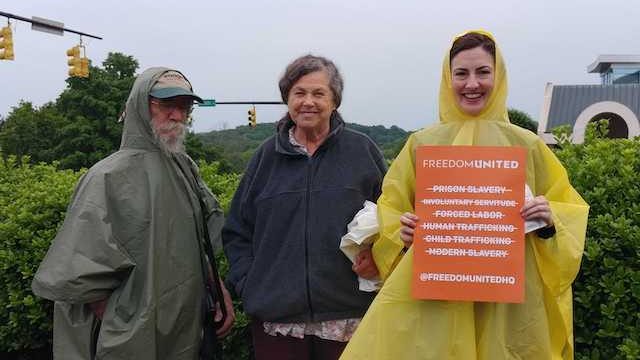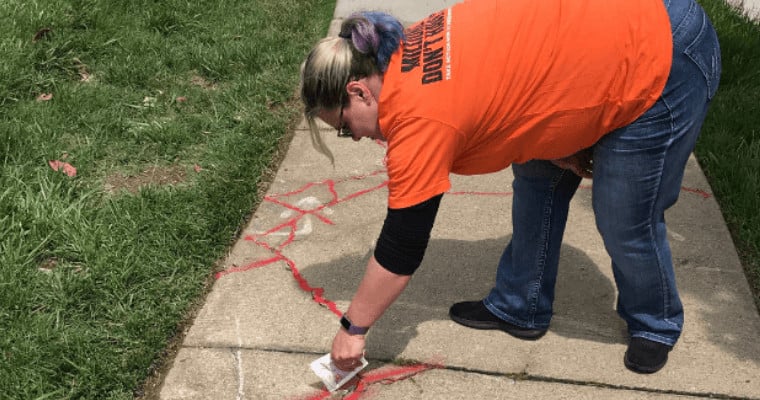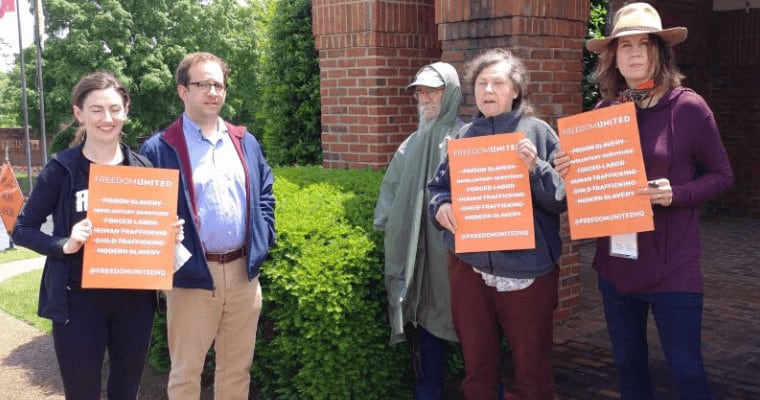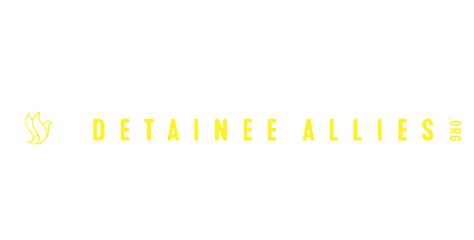“…detainees began to work in the kitchen just so they could eat more…one detainee lost 68 lbs. Their ‘volunteering’ involved literally working for food.”1
Join our larger campaign to end slavery in the U.S. prison and detention industry as we push for all sectors to divest and cut contracts with for-profit immigration detention centers, as well as public action to advance state and federal bills to ban their operation.
Immigrants detained in a private prison in San Diego allege that they have been subjected to forced labor and threatened with solitary confinement or restricted visitation rights if they refused to work.2
The complainants say the company that owns the prison, CoreCivic, one of the largest private prison and immigration detention companies in the US, pays at most $1.50 per day, and sometimes nothing at all, for their work as kitchen staff, janitors, barbers and in various other roles.
But reports of forced labor are not isolated to immigration detention centers. In Oklahoma, incarcerated people sentenced to rehabilitation have been subjected to forced labor on chicken farms, without any recourse or access to an actual recovery program.3 Incarcerated people in California have also been forced into labor and made to risk their lives fighting the state’s wildfires for a dollar an hour or less.4
Forced labor in prisons is not an immigration issue, it’s an American one, replicated worldwide.
The United States is home to the largest prison system in the world, housing 25% of the world’s incarcerated people but only 5% of the global population, and spends more than $80 billion a year. Incarceration rates in the United States have increased by 700% in the last four decades, even though crime has dramatically decreased.5 Among those incarcerated, more than 60% are people of color. And Black men are six times more likely to be incarcerated than white men.6
This system of mass incarceration – at a rate per capita that surpasses every country on earth – is inherently discriminatory, disproportionately affecting communities of color while creating a never-ending pool of people to be exploited through forced labor in prisons and detention centers across the country for corporate gain.
Rolling back President Obama’s progress on minimizing private prison industry contracts, President Trump called for an increase of prisons and detainment centers by upwards of 450%, perpetuating and embedding a system that exploits people of color for private benefit.7 President Biden has ordered the Department of Justice to end its reliance on private prisons, but this does not affect immigration detention centers, including those operated by CoreCivic.8
The Thirteenth Amendment of the U.S. Constitution, which intended to end slavery, shockingly permits its use as a punishment for crime.9 CoreCivic claims to align with international standards but over the years has faced multiple complaints for violating human rights.10
CoreCivic must address allegations of forced labor, state that forced labor will not be tolerated, and raise wages for voluntary work by incarcerated people and immigrant detainees, that is comparable with free labor, to help stop exploitation.
CoreCivic is also currently facing another class-action complaint for allegedly attempting to defraud its investors by falsely representing improved operational policies and procedures around the rights and dignity of incarcerated people and detainees in multiple centers.11 We must speak out and let them know forced labor in detention is unacceptable.
Will you join us in helping to stop slavery in prison and immigration detention?
Notes:
- https://www.thenation.com/article/ices-captive-immigrant-labor-force/ ↩
- https://www.thenation.com/article/ices-captive-immigrant-labor-force/ ↩
- https://www.freedomunited.org/news/oklahomas-indentured-servants/ ↩
- https://www.theatlantic.com/politics/archive/2017/12/how-much-longer-will-inmates-fight-californias-wildfires/547628/ ↩
- https://aflcio.org/2016/4/5/lets-get-serious-about-mass-incarceration ↩
- https://aflcio.org/2016/4/5/lets-get-serious-about-mass-incarceration ↩
- https://www.thenation.com/article/ices-captive-immigrant-labor-force/ ↩
- https://www.freedomunited.org/news/biden-orders-end-use-of-private-prisons/ ↩
- http://www.heritage.org/constitution/#!/amendments/13/essays/166/abolition-of-slavery12 It does not provide for the use of slavery against civil detainees in immigration centers. Additionally, regulations introduced in 2015 aim to end trafficking in government contracting.
Minimum international standards around the use of prison labor are outlined in the International Labour Organization’s Forced Labor Convention. It states that incarcerated people, just as free persons, must not be forced to work under threat of penalty or loss of privileges. Furthermore, wages should be comparable to those of free workers and health and safety measures should be taken as well.13http://www.ilo.org/empent/areas/business-helpdesk/faqs/WCMS_DOC_ENT_HLP_FL_FAQ_EN/lang–en/index.htm#Q3 ↩
- http://correctionalnews.com/2018/01/09/corecivic-class-action-tennessee/ ↩
- http://correctionalnews.com/2018/01/09/corecivic-class-action-tennessee/ ↩








Make your voice heard
Comment
229
Share this petition